
The world's most powerful space telescope. Launched: Dec. 25, 2021. First images revealed: July 12, 2022.
Verification: https://t.co/ChOEslj1j5
5 subscribers
How to get URL link on X (Twitter) App


 Webb captured this scene with its Mid-Infrared Instrument. Here, blue represents carbon-rich molecules, and red highlights the protostar and the planet-forming disk around it. The white areas represent a mixture of hydrocarbons, ionized neon, and thick dust.
Webb captured this scene with its Mid-Infrared Instrument. Here, blue represents carbon-rich molecules, and red highlights the protostar and the planet-forming disk around it. The white areas represent a mixture of hydrocarbons, ionized neon, and thick dust.

 By matching Webb’s data to models of star formation, researchers found that these galaxies are a unique window into future star formation. They primarily have populations of young stars, and the gas around them suggests they haven’t formed most of their stars yet.
By matching Webb’s data to models of star formation, researchers found that these galaxies are a unique window into future star formation. They primarily have populations of young stars, and the gas around them suggests they haven’t formed most of their stars yet.
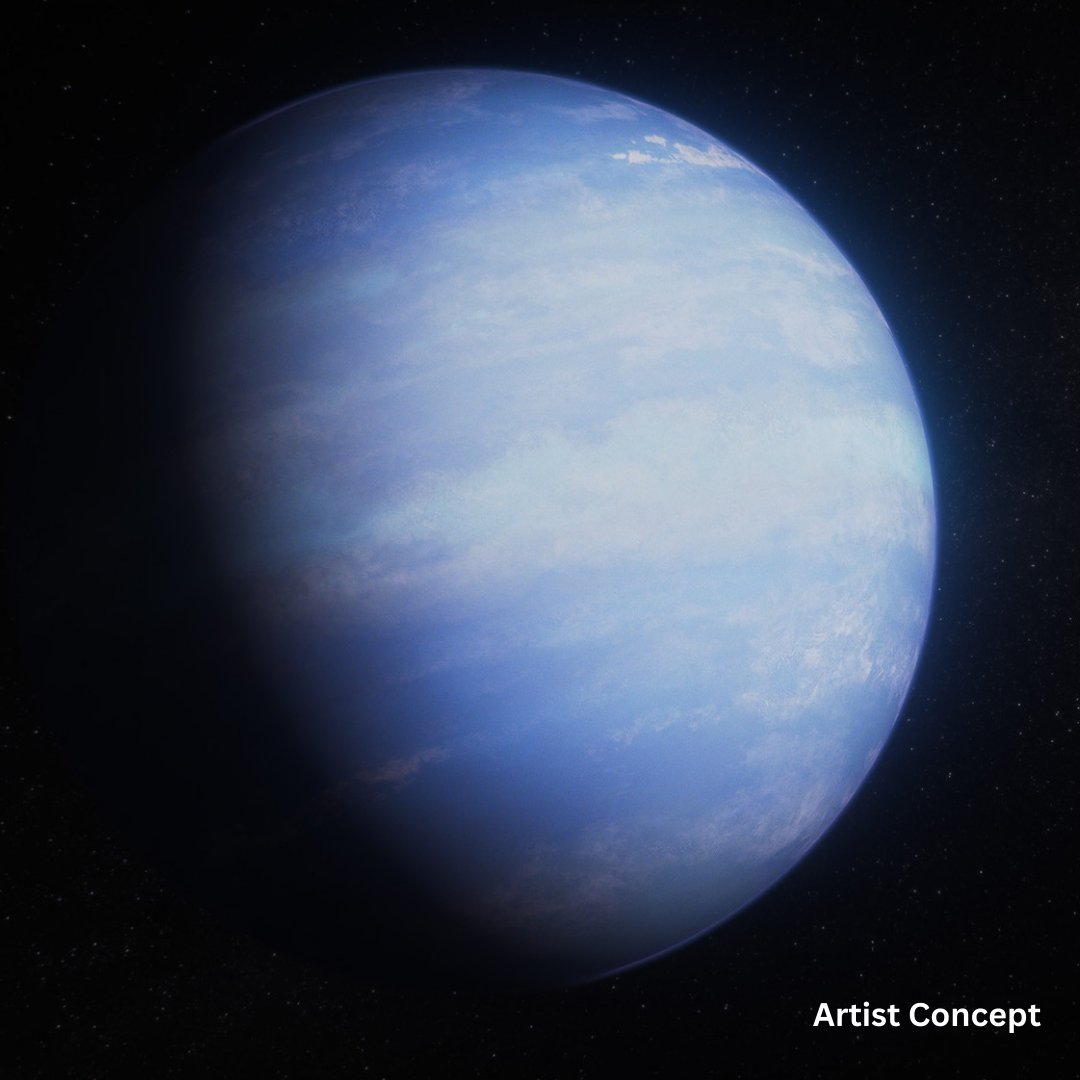
 WASP-107 b was thought to have a small, rocky core surrounded by a huge mass of hydrogen & helium. But how could its small core sweep up so much gas and not turn it to a Jupiter-mass planet? Or if its core was larger, why didn't its atmosphere contract to make the planet smaller?
WASP-107 b was thought to have a small, rocky core surrounded by a huge mass of hydrogen & helium. But how could its small core sweep up so much gas and not turn it to a Jupiter-mass planet? Or if its core was larger, why didn't its atmosphere contract to make the planet smaller?
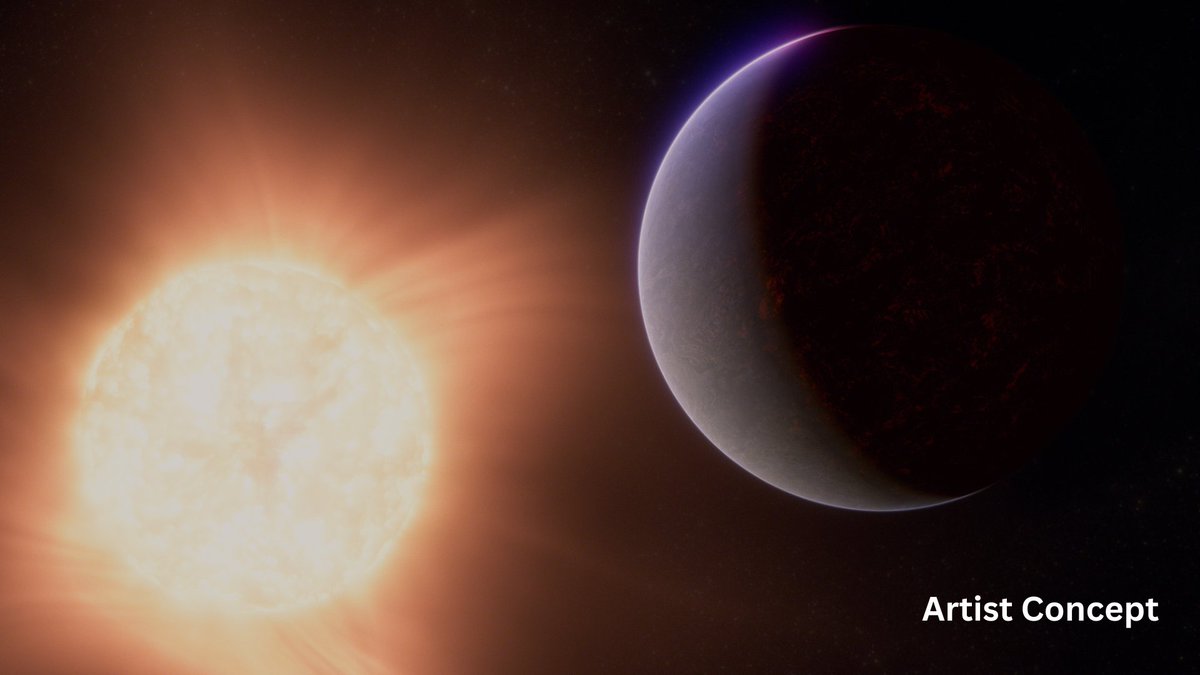
 55 Cancri e is a much more hostile environment than Earth: it’s hot (thought to be molten), bathed in radiation from being close to its Sun-like star, and tidally-locked with one side always day, the other side always night.
55 Cancri e is a much more hostile environment than Earth: it’s hot (thought to be molten), bathed in radiation from being close to its Sun-like star, and tidally-locked with one side always day, the other side always night.
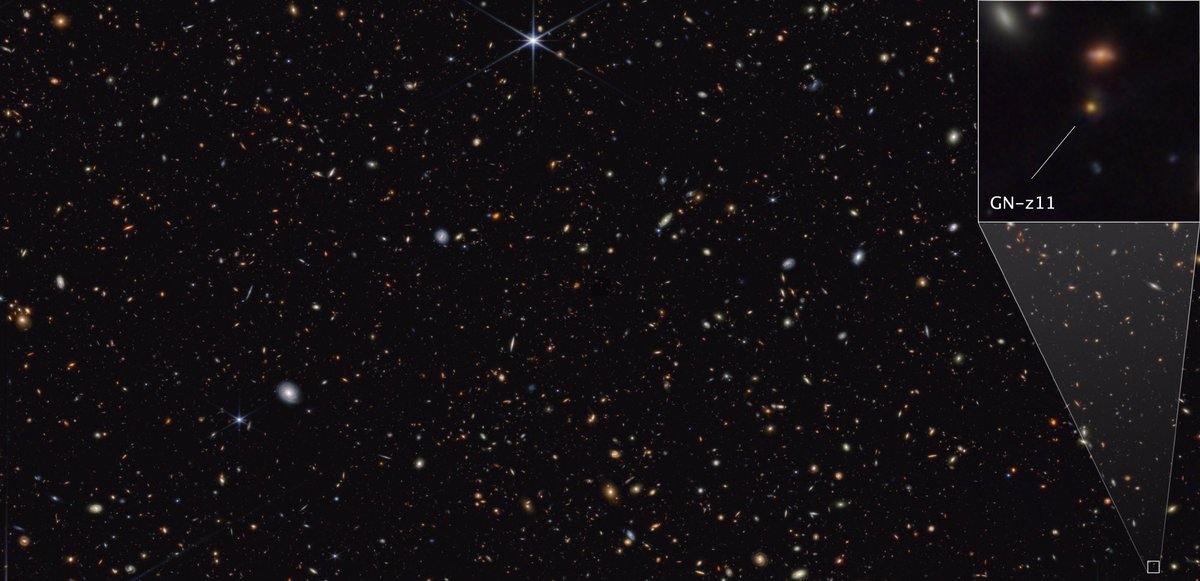
 GN-z11, an extremely bright galaxy, was discovered by @NASAHubble and is one of the earliest distant galaxies ever observed. Webb found the first clear evidence explaining why it is so luminous: a 2-million-solar-mass central supermassive black hole rapidly gobbling up matter.
GN-z11, an extremely bright galaxy, was discovered by @NASAHubble and is one of the earliest distant galaxies ever observed. Webb found the first clear evidence explaining why it is so luminous: a 2-million-solar-mass central supermassive black hole rapidly gobbling up matter.

 In a distant galaxy, there was once a pair of stars bound by gravity. Then one star exploded. What remained was its collapsed core, a dense remnant called a neutron star. The explosion launched the neutron star outward and pulled along its companion, still tied to it by gravity.
In a distant galaxy, there was once a pair of stars bound by gravity. Then one star exploded. What remained was its collapsed core, a dense remnant called a neutron star. The explosion launched the neutron star outward and pulled along its companion, still tied to it by gravity.
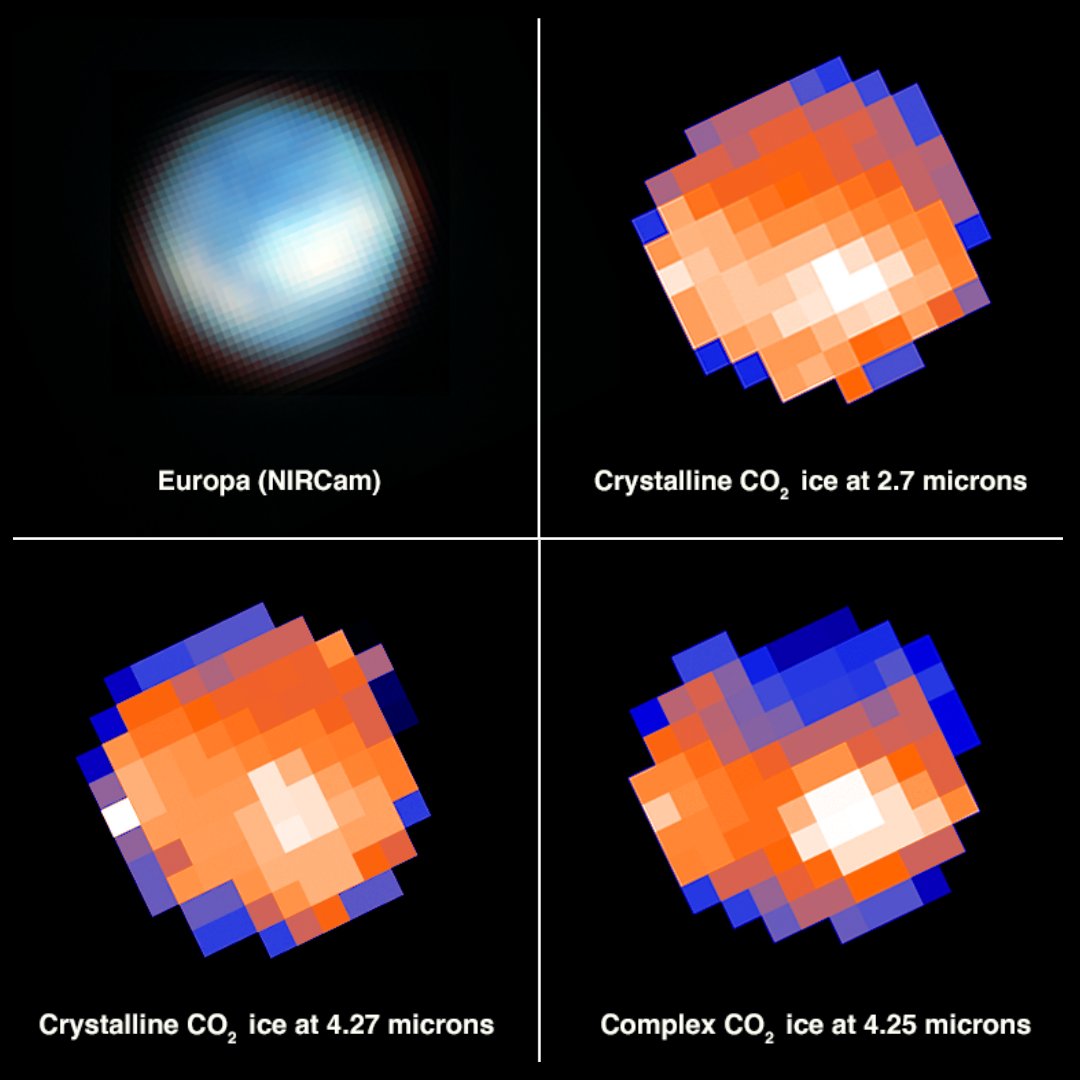
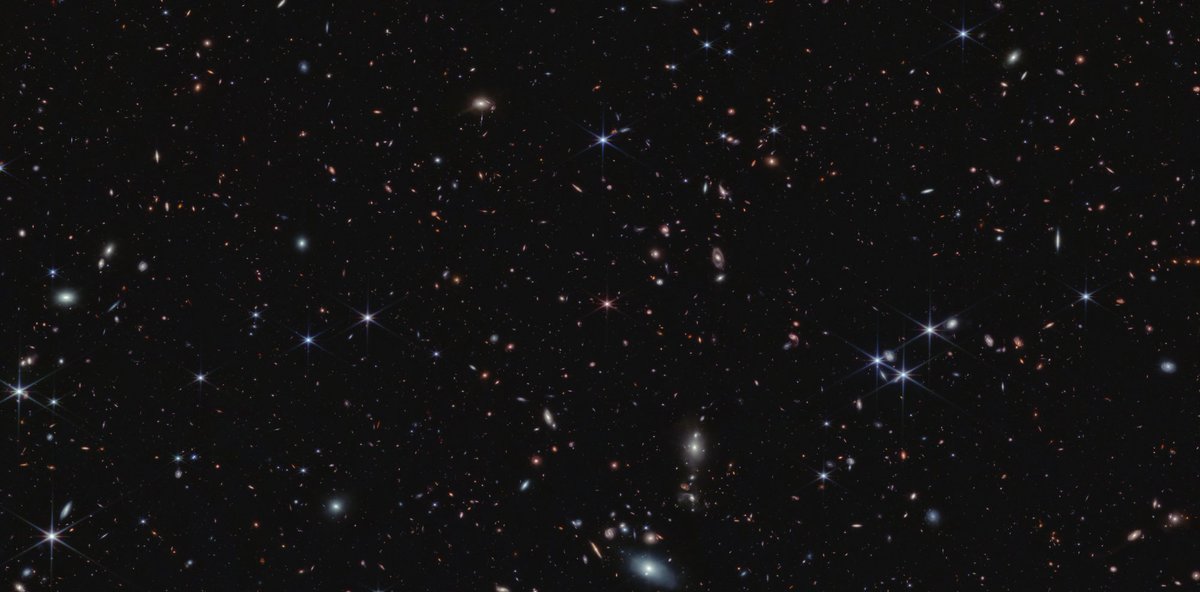


 This comet is called a main belt comet, a fairly new classification. Unlike most comets, found in areas beyond the orbit of Neptune, main belt comets reside in the asteroid belt between Mars and Jupiter. And unlike asteroids, they periodically display a halo and tail.
This comet is called a main belt comet, a fairly new classification. Unlike most comets, found in areas beyond the orbit of Neptune, main belt comets reside in the asteroid belt between Mars and Jupiter. And unlike asteroids, they periodically display a halo and tail.

 Uranus rotates on its side, causing its poles to experience 42 years of sunlight & 42 years of darkness. (It takes 84 years to orbit the Sun.) Voyager flew by Uranus in 1986 when it was summer at its south pole. Now the south pole is out of view, facing the darkness of space.
Uranus rotates on its side, causing its poles to experience 42 years of sunlight & 42 years of darkness. (It takes 84 years to orbit the Sun.) Voyager flew by Uranus in 1986 when it was summer at its south pole. Now the south pole is out of view, facing the darkness of space.

 M92 is a classic target for studying how stars evolve. Not only is it so close that Webb can single out individual stars, but it contains some of the oldest stars in the Milky Way. We can take what we learn from M92 to know more about distant stars in the ancient universe.
M92 is a classic target for studying how stars evolve. Not only is it so close that Webb can single out individual stars, but it contains some of the oldest stars in the Milky Way. We can take what we learn from M92 to know more about distant stars in the ancient universe.

 We need spectroscopy to confirm how far away a galaxy is, as closer galaxies can “masquerade” as distant ones. Spectroscopy refers to breaking light into its components to create spectra, or “barcodes.” On a "barcode," elements and molecules have distinct signatures we can read.
We need spectroscopy to confirm how far away a galaxy is, as closer galaxies can “masquerade” as distant ones. Spectroscopy refers to breaking light into its components to create spectra, or “barcodes.” On a "barcode," elements and molecules have distinct signatures we can read.

 This protostar is a hot, puffy clump of gas that’s only a fraction of the mass of our Sun. As it draws material in, its core will compress, get hotter, and eventually begin nuclear fusion — creating a star!
This protostar is a hot, puffy clump of gas that’s only a fraction of the mass of our Sun. As it draws material in, its core will compress, get hotter, and eventually begin nuclear fusion — creating a star!

 First, direct your attention to the tips of the pillars, many of which appear tinged with fiery “lava.” Here, young stars periodically shoot out jets of material that collide with the pillars, which can then form wavy patterns. Energetic hydrogen molecules create that red glow.
First, direct your attention to the tips of the pillars, many of which appear tinged with fiery “lava.” Here, young stars periodically shoot out jets of material that collide with the pillars, which can then form wavy patterns. Energetic hydrogen molecules create that red glow.

 In visible light, Neptune appears blue due to small amounts of methane gas in its atmosphere. Webb’s NIRCam instrument instead observed Neptune at near-infrared wavelengths, so Neptune doesn’t look so blue!
In visible light, Neptune appears blue due to small amounts of methane gas in its atmosphere. Webb’s NIRCam instrument instead observed Neptune at near-infrared wavelengths, so Neptune doesn’t look so blue! 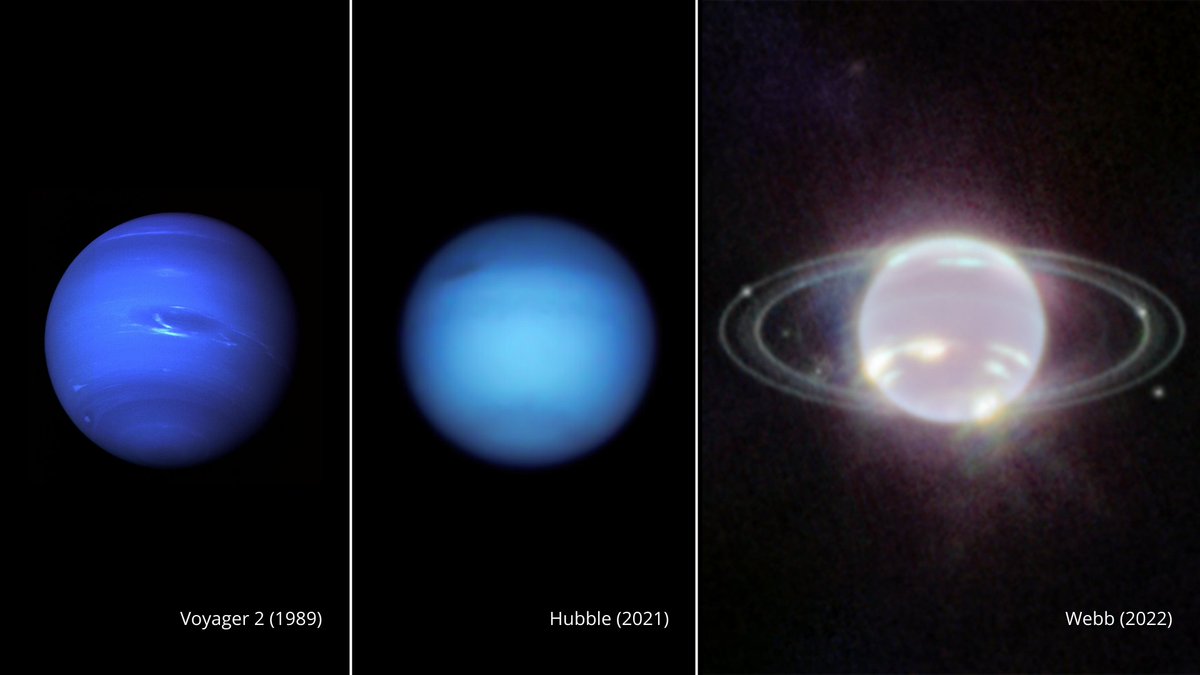

 Webb’s unique perspective is meant to complement the work that rovers and other missions do. From where it sits, Webb can study short-term events like dust storms, weather patterns, as well as seasonal changes.
Webb’s unique perspective is meant to complement the work that rovers and other missions do. From where it sits, Webb can study short-term events like dust storms, weather patterns, as well as seasonal changes.

 This is a gas giant named HIP 65426 b, which is about 6-12 times the mass of Jupiter. It is young as planets go — about 15 to 20 million years old, compared to our 4.5-billion-year-old Earth.
This is a gas giant named HIP 65426 b, which is about 6-12 times the mass of Jupiter. It is young as planets go — about 15 to 20 million years old, compared to our 4.5-billion-year-old Earth.
https://twitter.com/NASAWebb/status/1554469773433606144Science is a collaborative process! You may have seen some preliminary findings from Webb data already. But before NASA can publicize news results, we have to wait for findings to be peer-reviewed — meaning that scientists have checked each other’s work.

 The stars – and their layers of light – steal more attention in the NIRCam image, while in the MIRI image, Webb reveals for the first time that the dying star is cloaked in dust. In thousands of years, these delicate, gaseous layers will dissipate into surrounding space.
The stars – and their layers of light – steal more attention in the NIRCam image, while in the MIRI image, Webb reveals for the first time that the dying star is cloaked in dust. In thousands of years, these delicate, gaseous layers will dissipate into surrounding space.
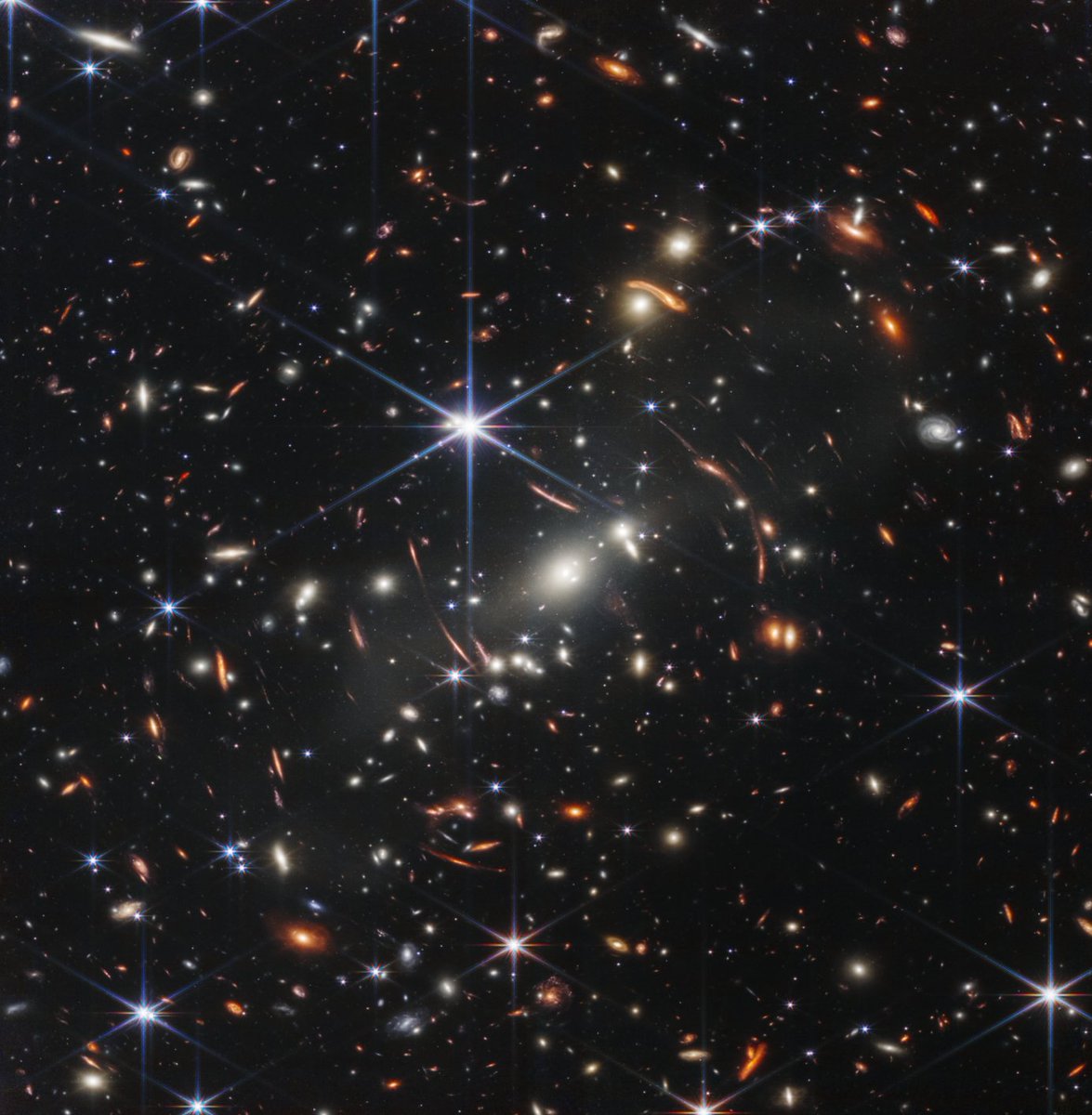
 This isn’t the farthest back we’ve observed. Non-infrared missions like COBE & WMAP saw the universe closer to the Big Bang (~380,000 years after), when there was only microwave background radiation, but no stars or galaxies. Webb sees a few 100 million years after the Big Bang.
This isn’t the farthest back we’ve observed. Non-infrared missions like COBE & WMAP saw the universe closer to the Big Bang (~380,000 years after), when there was only microwave background radiation, but no stars or galaxies. Webb sees a few 100 million years after the Big Bang. 

 First, a quick breakdown. “Fully aligned” means that Webb’s mirrors are now directing fully focused light collected from space down into each instrument. Each instrument is also successfully capturing images with the light being delivered to them.
First, a quick breakdown. “Fully aligned” means that Webb’s mirrors are now directing fully focused light collected from space down into each instrument. Each instrument is also successfully capturing images with the light being delivered to them.